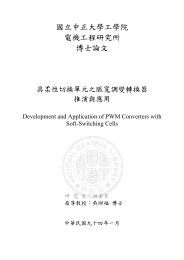Syntax of the Bi Comparative Construction in Mandarin Chinese
Syntax of the Bi Comparative Construction in Mandarin Chinese
Syntax of the Bi Comparative Construction in Mandarin Chinese
You also want an ePaper? Increase the reach of your titles
YUMPU automatically turns print PDFs into web optimized ePapers that Google loves.
<strong>Syntax</strong> <strong>of</strong> <strong>the</strong> <strong>Bi</strong> <strong>Comparative</strong> <strong>Construction</strong> <strong>in</strong> Mandar<strong>in</strong> Ch<strong>in</strong>ese<br />
b. Q: tamen yij<strong>in</strong>g bi-guo liqi ma?<br />
<strong>the</strong>y already compete- ASP strength PART<br />
‘Have <strong>the</strong>y already competed for <strong>the</strong>ir strength?’<br />
A: bi le.<br />
Compete ASP<br />
‘Yes, <strong>the</strong>y did.’<br />
c. Q: ta bi Lisi geng ai ni ma?<br />
A: *bi<br />
he COM Lisi more love you PART<br />
‘Does he love you more than Lisi does?’<br />
COM<br />
‘Yes.’<br />
Fourth, many verbs occur <strong>in</strong> <strong>the</strong> V-yi-V reduplication form, while bi <strong>in</strong> CC cannot.<br />
(74) a. nimen bi-(yi)-bi liqi ba?<br />
you(plural) compete-(one)-compete strength PART<br />
‘You can (try to) compete for your strength!’<br />
b. *Wo bi-(yi)-bi Lisi geng ai ni<br />
I COM-(one)-COM Lisi more love you<br />
F<strong>in</strong>ally, verbs usually take a nom<strong>in</strong>al complement, while bi has more alternations <strong>in</strong><br />
<strong>the</strong> category <strong>of</strong> its follow<strong>in</strong>g element, such as NP, VP, PP, CP, and even a<br />
non-constituent.<br />
48<br />
中正大學 e-Thesys (94 學年度)





